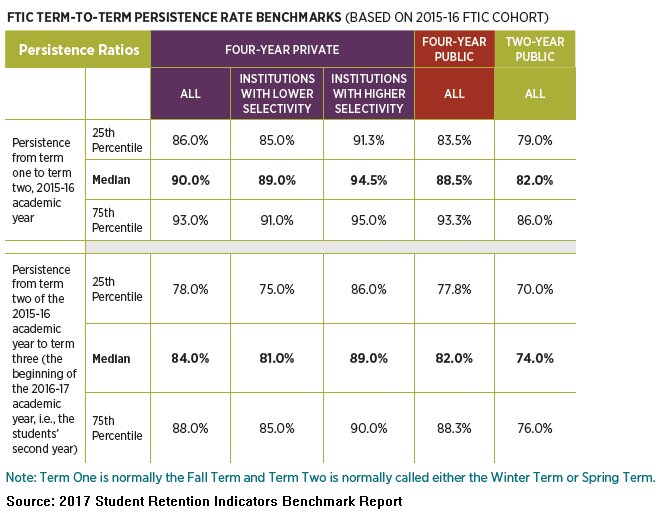enrollment
YES, your institution CAN be ‘student-ready’ on Day One for diverse college populations!
This is part two of a two-part post on preparing for today’s diverse college populations, to increase their college completion rates. See part one.
A few weeks ago my colleague, Dr. Mari Normyle, posted a blog with a question: Will your institution be ‘student-ready’ for diverse college populations on Day One? My response is YES, you can be!
To be ready, first look carefully at the needs of the diverse populations within the entering class. When you understand the needs of our entering students by race/ethnicity, first-generation vs. students with college-educated parents, gender, age, or any other diverse category, you can begin to make decisions how to strategically use the data to impact outcomes.
One way to gain a solid understanding of entering students’ diverse needs is to gather motivation data by population. For example, the first part of this post provided 13 facts in four diverse categories about 2016 entering freshman which were collected from 99,300 students who completed RNL’s College Student Inventory. All 13 facts are what we call leading indicators, or early alerts, which can help to determine what entering students need to persist, progress, retain, and complete. Most of you know we at RNL are all about being data-informed and spend most of our time working with you to move data into action.
Benchmarking: another important first step for serving diverse college populations
Before you set strategy, it is also helpful to understand normal outcomes for your institution type. In the 2017 Student Retention Indicators Benchmark Report you will find benchmarks for persistence, progression, and retention for four-year and two-year institutions. For example, you will find persistence outcomes from term one to term two and term two to term three for first-time-in-college students regardless of race/ethnicity, first-generation vs. students with college-educated parents, gender, age or other attributes.

These data will give you an idea of how you perform overall against other institutions. However, it is always better to disaggregate your outcomes by subpopulations like the diverse groups described in part one of this post. (Note that higher selectivity in the table was defined as ACT > 23.)
Developing a strong strategy for Day One
To develop a strong strategy for Day One, I recommend that student success professionals consider adopting an approach used by their colleagues in marketing, recruitment, and admissions. For years, these offices have used a very common strategy which they call a communication flow, or comm flow. It includes messages directed to students at key points in time in order to move them through the process of admission to enrollment. This comm flow strategy has applications for those of us who work for student success. We may not call it a comm flow—rather, an outreach and intervention plan—but it can be applied to our common strategies like these:
- First-year transitions (orientation, FYE, etc.);
- Academic advising/degree planning;
- Academic support (DFW rate analysis);
- Academic recovery (probation, suspension, SAP);
- Qualified recruit-back;
- Second-year transitions;
- Co-curricular/residence life programming.
Whatever we call it, the point is to keep nudging the student to the next stage, which is basically helping them to be able to maintain successful, ongoing enrollment. In student success terms, we call this persistence, progression, retention, and eventually completion.
One specific communication strategy you may want to include in your student success “comm flow” is something I call CAN. CAN—Congratulating, Alerting and Nudging—will help you use the early-alert data mentioned to provide effective outreach and intervention messaging to your continuing students. Sometimes, using CAN for diverse college populations really sends the message that these students matter. A sense of mattering is always in the top comments we get from students who are satisfied and who retain. “They made me feel like I mattered!” For example, some of my partner institutions are congratulating students at mid-term who earn Bs or better. Students who earn Cs might be nudged and made aware that the graduation requirement is 2.0 and students who achieve Ds or Fs might be alerted for referral. Of course, each institution would need to decide under what conditions and when to apply CAN.
What to do next
Before summer, or as soon as you can, get your student success committee together and review the opportunities where you might be able to implement CAN. Some common conditions would be midterm grades, end of term GPA, students coming off probation, students who have not seen their advisor for a term or two, students who have not completed an assignment, students going on probation, and students who have not registered and who don’t have a reason for not doing so. There will be many conditions. You will need to decide who sends the message and when it’s sent. This is key. Messages from faculty members can be more powerful than messages from service offices. The real answer is who has a relationship with the student. That will be key. Relationship building and giving your students a sense of mattering will always pay off in persistence, progression, retention, completion and alumni giving. Happy CANNING!
National Conference on Student Recruitment, Marketing, and Retention
July 25-28, Denver, Colorado | Learn more and register
Looking for more insights on student success, student retention, and enrollment management? Attend higher education’s most comprehensive conference on enrollment management and choose from more than 120 sessions covering today’s pressing enrollment issues on campuses. Many sessions will address recruiting and retaining diverse college populations.